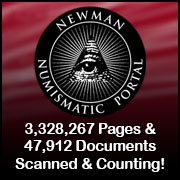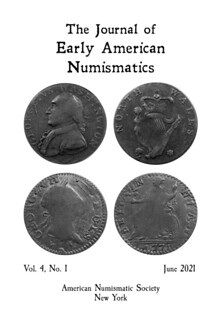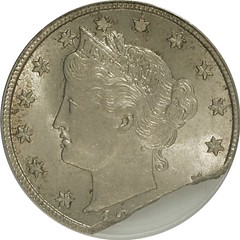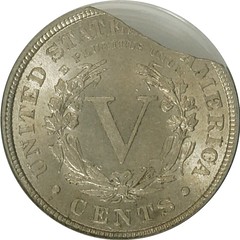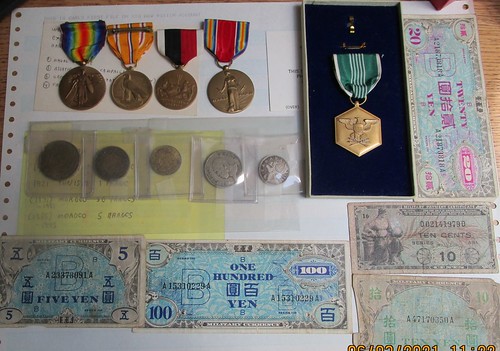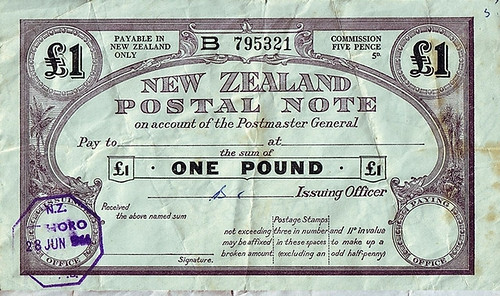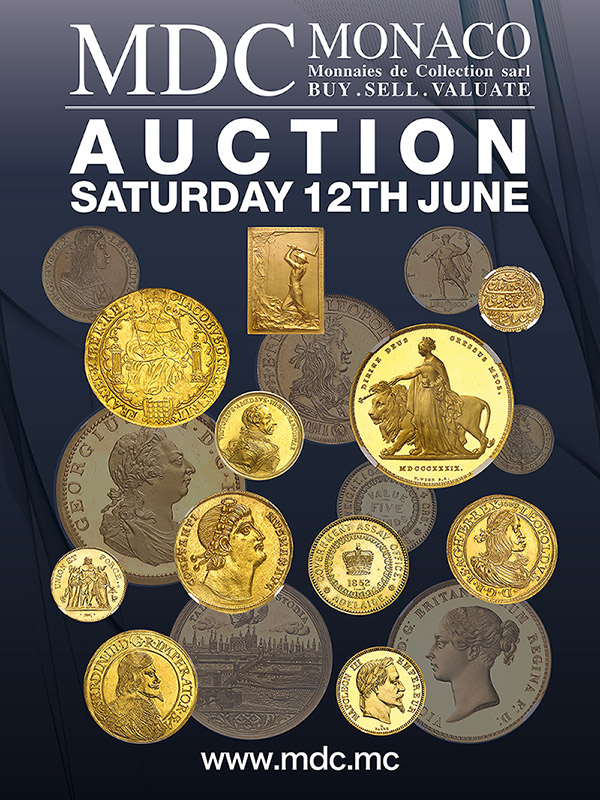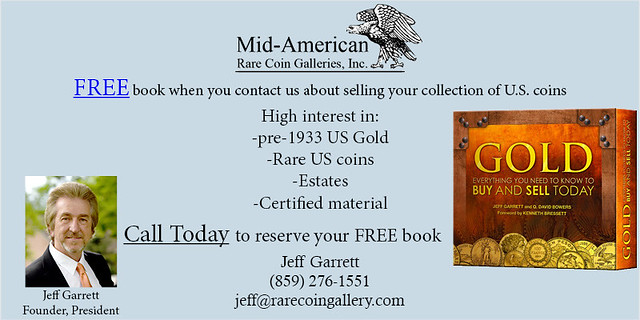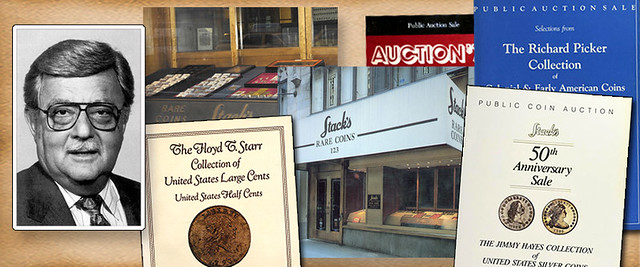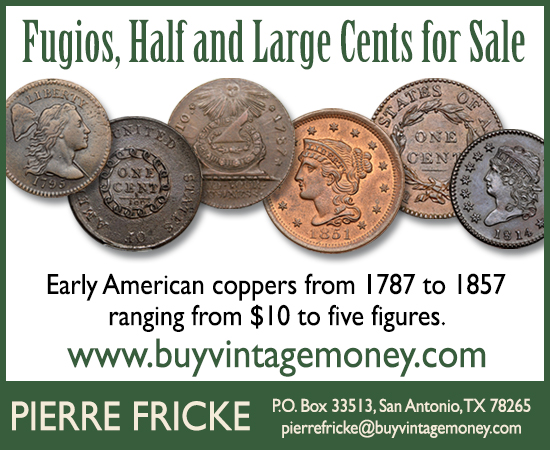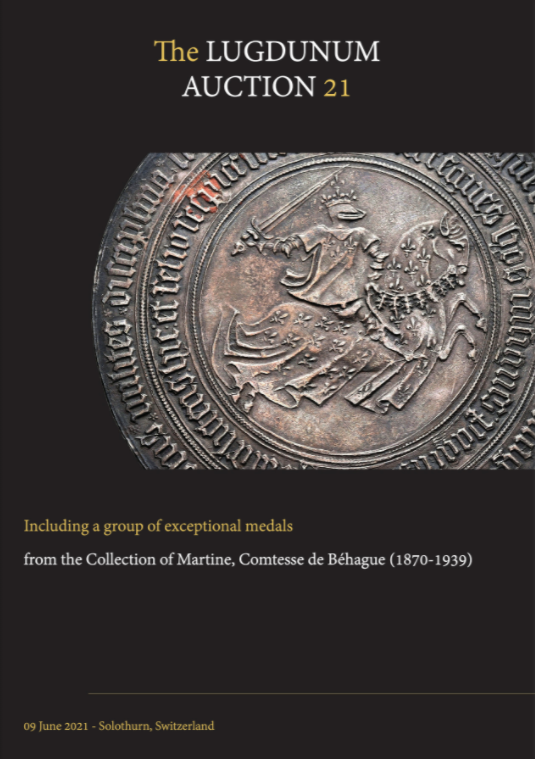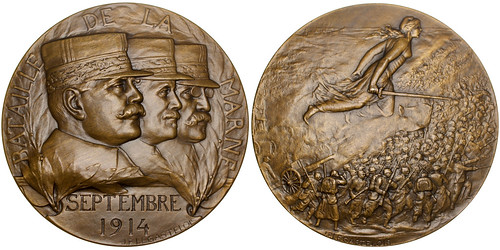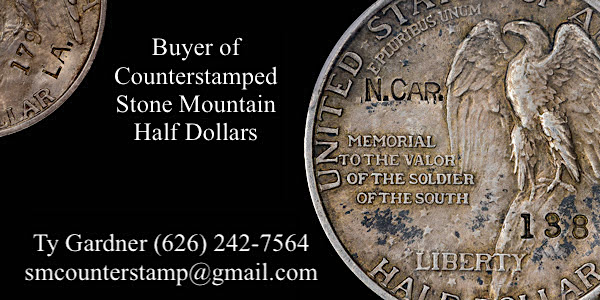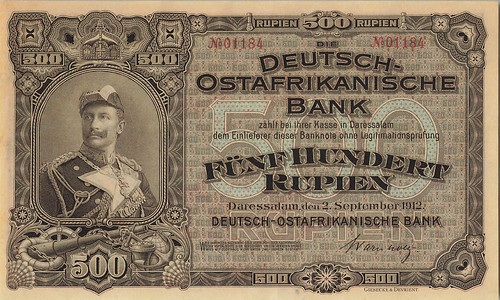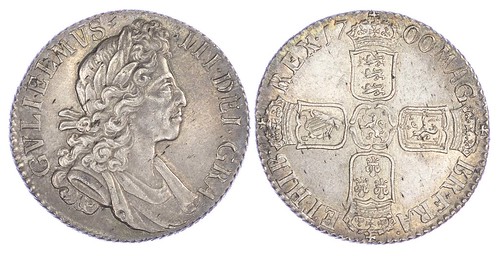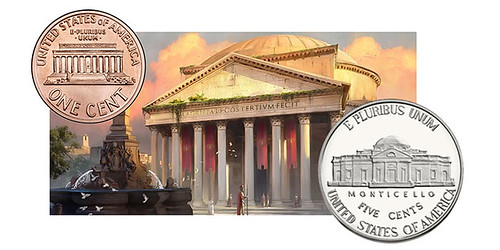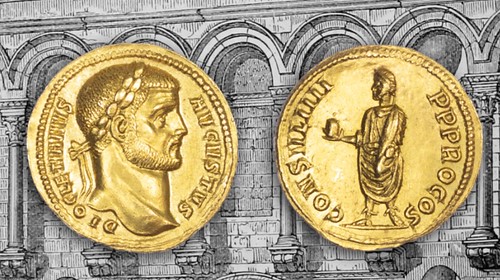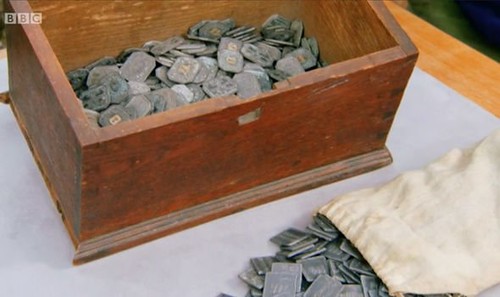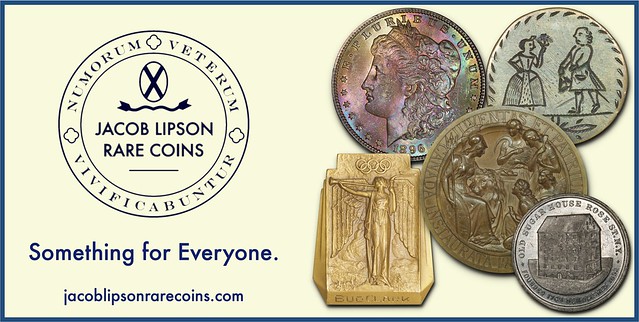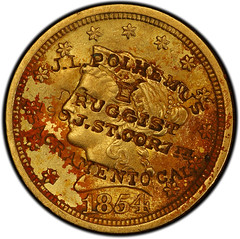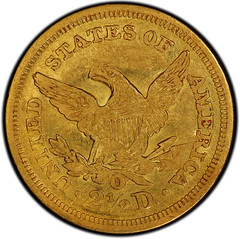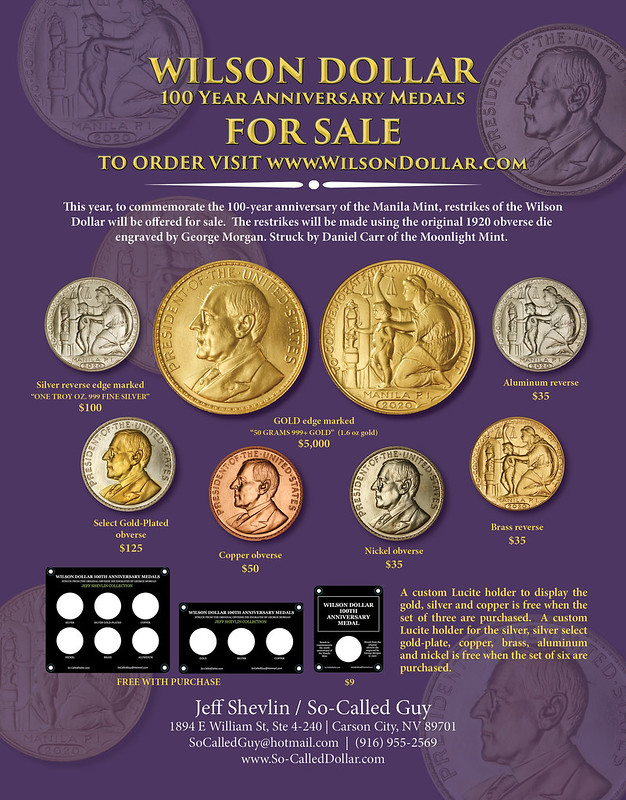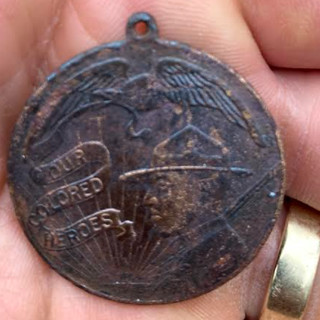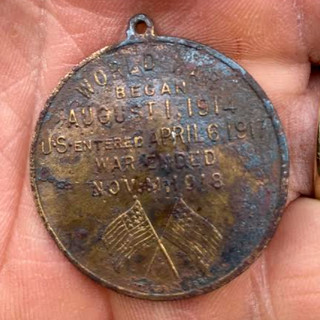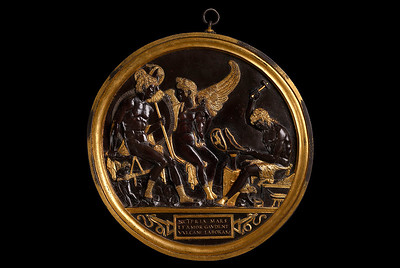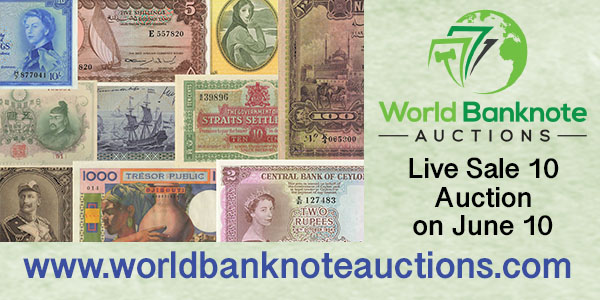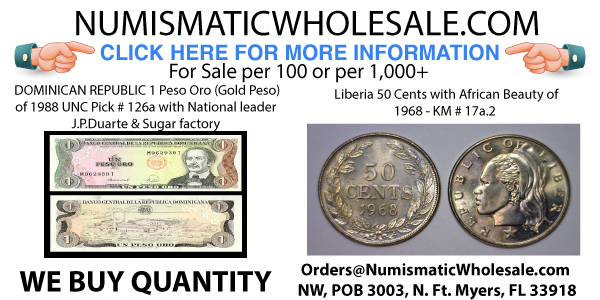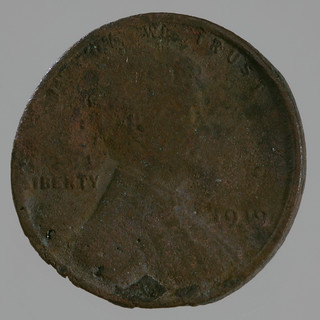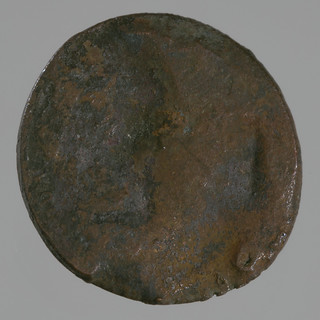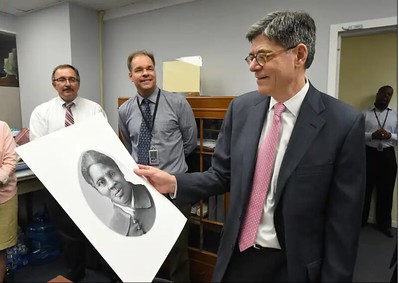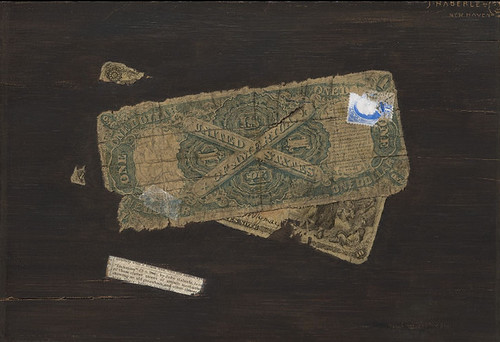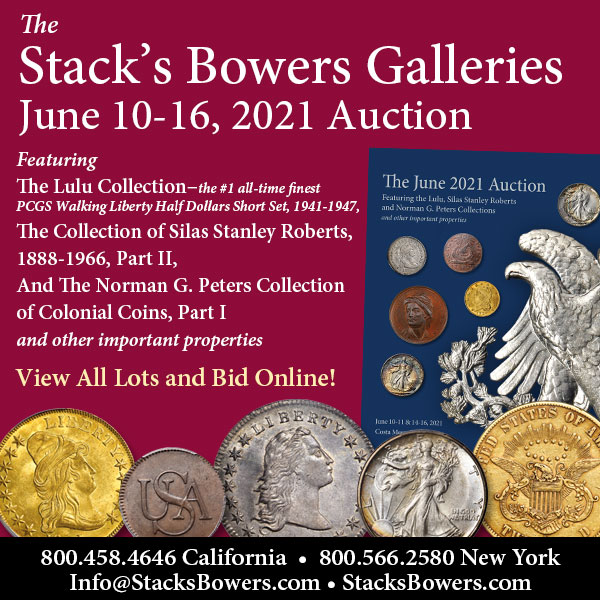
Visit our NBS Sponsors


|
About Us
The Numismatic Bibliomania Society is a non-profit association devoted to the study and enjoyment of numismatic literature. For more information please see our web site at coinbooks.org SubscriptionsThose wishing to become new E-Sylum subscribers (or wishing to Unsubscribe) can go to the following web page link MembershipThere is a membership application available on the web site Membership Application To join, print the application and return it with your check to the address printed on the application. Print/Digital membership is $40 to addresses in the U.S., and $60 elsewhere. A digital-only membership is available for $25. For those without web access, write to: Charles Heck, Treasurer AsylumFor Asylum mailing address changes and other membership questions, contact Chuck at this email address: treasurer@coinbooks.org SubmissionsTo submit items for publication in The E-Sylum, write to the Editor at this address: whomren@gmail.com BUY THE BOOK BEFORE THE COINSale Calendar |
- WAYNE'S WORDS: THE E-SYLUM JUNE 6, 2021
- JOURNAL OF EARLY AMERICAN NUMISMATICS JUNE 2021
- HANDBOOK OF BIBLICAL NUMISMATICS UPDATED
- GARRETT ZISS JOINS NNP AS SUMMER INTERN
- NNP ADDS LETTERS ON BRITTLE LIBERTY NICKELS
- THE BRENNER 150 EXHIBITION
- TYRANT COLLECTION U.S. TYPE COIN ANA EXHIBIT
- PONDERING NUMISMATIC BOOKS FOR CHILDREN
- NOTES FROM E-SYLUM READERS: JUNE 6, 2021
- POSTAL NOTES AND ORDERS WEBSITE PROPOSED
- VOCABULARY TERM: EDGE LETTERING, PART 4
- ELLA QUINN (1832-1900)
- HARVEY STACK'S NUMISMATIC FAMILY, PART 97
- THE COIN THAT CHANGED JIM MCGUIGAN'S LIFE
- COLTRANE COLLECTION PART 2 SELECTIONS
- NUMISMAGRAM SELECTIONS: JUNE 2021
- 1912 GERMAN EAST AFRICA 500 RUPIEN
- NUMISMATIC NUGGETS: JUNE 6, 2021
- TEMPLES ON ANCIENT COINS
- THE GOLD AUREUS OF DIOCLETIAN
- ANTIQUES ROADSHOW COMMUNION TOKEN HOARD
- SS CENTRAL AMERICA GOLD COUNTERSTAMP
- WWI COLORED HEROES MEDAL FOUND
- 15TH CENTURY BRONZE ROUNDEL OF VENUS
- JIGSAW COINAGE DESIGNS
- ON THOUSAND OUNCE BARS
- COUNTERFEIT COINS INTERCEPTED
- CENT CHARRED IN THE TULSA RACE MASSACRE
- WHEN WILL HARRIET TUBMAN ADORN THE $20 BILL?
- TROMPE L'OEIL MONEY ARTIST JOHN HABERLE
- BECKETT SUSPENDS MOST GRADING SERVICES
- LOOSE CHANGE: JUNE 6, 2021
Click here to read the thin version on the web
Click here to subscribe
Click here to access the complete archive
To comment or submit articles, reply to whomren@gmail.com
Content presented in The E-Sylum is not necessarily researched or independently fact-checked, and views expressed do not necessarily represent those of the Numismatic Bibliomania Society.
WAYNE'S WORDS: THE E-SYLUM JUNE 6, 2021
 New subscribers this week include:
Norman Agran.
Welcome aboard! We now have 6,634 subscribers.
New subscribers this week include:
Norman Agran.
Welcome aboard! We now have 6,634 subscribers.
Thank you for reading The E-Sylum. If you enjoy it, please send me the email addresses of friends you think may enjoy it as well and I'll send them a subscription. Contact me at whomren@gmail.com anytime regarding your subscription, or questions, comments or suggestions about our content.
This week we open with a new Journal of Early American Numismatics issue, updates from the Newman Numismatic Portal, and the Brenner 150 exhibition.
Other topics this week include the Tyrant Collection U.S. type coins, numismatic books for children, Postal Notes, the Coltrane collection Part 2, temples on ancient coins, the gold aureus of Diocletian, communion tokens, the Colored Heroes medal, and a cent charred in the Tulsa Race Massacre fires.
To learn more about a family of counterfeiters, Evasion coppers, Biblical numismatics, brittle nickels, the King of Siam set, Nils Lofgren's coin collection, edge mintmarks and symbols, Norman Stack's type set, dealer Addison Smith, the Four Horsemen medal, Max the Wonderdog, Chubbuck's Morse Code token, the Temple of Jupiter, the bronze roundel of Venus, jigsaw coin designs, money artist John Haberle and Ella Quinn's barrel of gold, read on. Have a great week, everyone!
Wayne Homren
Editor, The E-Sylum
JOURNAL OF EARLY AMERICAN NUMISMATICS JUNE 2021
The latest issue of JEAN, the Journal of Early American Numismatics has been published by the American Numismatic Society. Here is the table of contents and an excerpt from the Editor's Preface by Christopher R. McDowell. Thanks. -Editor
Editor's Preface
The Coins Made for the Islands and Mainland of America
by the French West India Company (1670)
Jérôme Jambu
The Letter from the Officer of the 64th Regiment was not About the
1776 Continental Dollar
Julia H. Casey
The Crane Ring of Rupert, Vermont:
A Family of Counterfeiters at Reuben Harmon's Mint
Julia H. Casey
The Most Persistent Patent Farthing Counterfeiter
Mark A. Sportack
Evasion Coppers: A Rose by any other Name
Jeff Rock
HANDBOOK OF BIBLICAL NUMISMATICS UPDATED
Newman Numismatic Portal Project Coordinator Len Augsburger provided the following report on a new addition to the site. Thanks. -Editor
Mel Wacks Updates Handbook of Biblical Numismatics
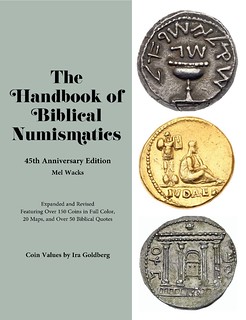 Mel Wacks has updated his Handbook of Biblical Numismatics, which is now available on Newman Portal. Lianna Spurrier supplied graphics and layout work under sponsorship of Newman Portal.
Mel Wacks has updated his Handbook of Biblical Numismatics, which is now available on Newman Portal. Lianna Spurrier supplied graphics and layout work under sponsorship of Newman Portal.
Abraham Sofaer contributed an overview that is featured on the back cover: This Handbook is just what it sets out to be, and what is needed in the field of Jewish Coinage. Mel Wacks has contributed mightily to this field. And this Handbook - replacing his first version with an entirely new revision - is among his most important gifts. Somehow, Mel has managed to provide a work that is succinct without being superficial; that summarizes all the important material rather than limiting coverage through exclusion; and that simplifies complicated issues without compromising their difficulties.
In pulling off this achievement, Mel has provided a practical, take-along, guide. Every important period is covered, and every significant coin type illustrated. Rather than attempting to supersede other types of books, Mel gives us all - collectors, scholars, and intelligent observers alike - something to use anywhere to identify coin types and context, read inscriptions, and even have some idea of value. Even a novice will be able quickly to learn and appreciate this aspect of Jewish history, and the history of other cultures with whom the Jewish People have interacted. The Handbook is thus a must have for the tutored and beginner alike.
The price of the printed Handbook of Biblical Numismatics 45th Anniversary Edition has not been set yet, For more information contact Mel Wacks at directorjahf@yahoo.com or 818-225-1348.
Link to Handbook of Biblical Numismatics on Newman Portal:
https://nnp.wustl.edu/library/booksbyauthor/518323
GARRETT ZISS JOINS NNP AS SUMMER INTERN
Newman Numismatic Portal Project Coordinator Len Augsburger reports a new addition to the NNP staff. -Editor
Garrett Ziss Joins Newman Portal as Summer Intern
 Garrett Ziss, American Numismatic Association Young Numismatist of the Year for 2020, will be working for the Eric P. Newman Numismatic Education Society (EPNNES) as a summer intern for 2021. Ziss is well-known in numismatic circles and has contributed original research to the John Reich Journal and other publications. Garrett has conducted oral history interviews for the John Reich Collectors Society and Liberty Seated Collectors Club, and has delivered presentations at many events including the recent Newman Numismatic Portal Symposium.
Garrett Ziss, American Numismatic Association Young Numismatist of the Year for 2020, will be working for the Eric P. Newman Numismatic Education Society (EPNNES) as a summer intern for 2021. Ziss is well-known in numismatic circles and has contributed original research to the John Reich Journal and other publications. Garrett has conducted oral history interviews for the John Reich Collectors Society and Liberty Seated Collectors Club, and has delivered presentations at many events including the recent Newman Numismatic Portal Symposium.
Ziss will be involved in a number of Newman Portal tasks, including transcriptions of numismatic content drawn from the National Archives and historic newspaper articles.
Link to Garrett Ziss presentation, From the War of 1812 to the Civil War: A Chronology of a Numismatic Marriage,
from the March 2021 Newman Numismatic Portal Symposium:
https://nnp.wustl.edu/library/book/598038
NNP ADDS LETTERS ON BRITTLE LIBERTY NICKELS
Newman Numismatic Portal intern Garrett Ziss provided this report on some interesting correspondence recently added to the site. Thanks! I was unaware of this problem. -Editor
Even though we're moving towards a cashless society, there are times when we need to grab a few coins to complete a transaction. However, this task was not always straightforward during the late 1800s. According to correspondence from the National Archives, recently transcribed by the Newman Portal, brittle five-cent nickels (commonly referred to today as Liberty Head Nickels) were returned to the Mint from banks in various states, including Iowa, Florida, Kentucky, Texas, New Jersey and Massachusetts. Their composition was 25% nickel and 75% copper and the main complaint was that these coins were chipping and breaking, even when very little pressure was applied, and could not be used in commerce.
THE BRENNER 150 EXHIBITION
It's a members-only event, but a great reason to join the American Numismatic Society. On June 12th ANS will host a video conference about their upcoming exhibit of the works of coin and medal artist Victor David Brenner. -Editor
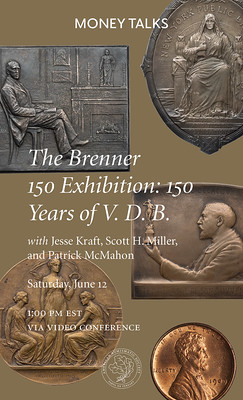 By the time of the Hahlo Exhibition in 1912, Victor David Brenner was a globally-acclaimed sculptor and was still receiving accolades for his famed Lincoln cent of 1909. The exhibition effectively served as a survey of his life's work up to that point, showcasing pieces he produced early in his career alongside others that were freshly struck. The Brenner 150 Exhibition is a new digital recreation of the famous original display.
By the time of the Hahlo Exhibition in 1912, Victor David Brenner was a globally-acclaimed sculptor and was still receiving accolades for his famed Lincoln cent of 1909. The exhibition effectively served as a survey of his life's work up to that point, showcasing pieces he produced early in his career alongside others that were freshly struck. The Brenner 150 Exhibition is a new digital recreation of the famous original display.
In addition to the 1912 Hahlo Exhibition having displayed 150 pieces of his work, the year 2021 marks the 150th anniversary of his birth—June 12, 1871. Join Assistant Curator of American Numismatics Jesse Kraft, ANS Fellow Scott H. Miller, and MFA Boston Director of Exhibitions Patrick McMahon on June 12, 2021 at 1:00 pm ET for the official launch of the digital exhibition, a tour through the website, and a discussion on the sculptor and his body of work.
ANS Members only. This Money Talks will be held live on Zoom. A link will be sent to members the morning of the event. This lecture will be recorded and uploaded to YouTube for later viewing.
Money Talks: Numismatic Conversations is supported by an ANS endowment fund generously given in honor of Mr. Vladimir Clain-Stefanelli and Mrs. Elvira Clain-Stefanelli.
TYRANT COLLECTION U.S. TYPE COIN ANA EXHIBIT
The ANA will have a blockbuster exhibit at this year's convention in Rosemont. Here's the press release. -Editor
$100 Million Exhibit of U.S. Type Coins from The Tyrant Collection to be Displayed at the Chicago World's Fair of Money®
The never-before-seen exhibit will showcase hundreds of superb condition coins, including the famous King of Siam proof set
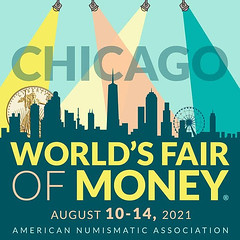 For the first time ever, the public will be able to see the superb quality type set of more than 400 U.S. coins from the acclaimed Tyrant Collection (TheTyrantCollection.com) at the Chicago World's Fair of Money (WorldsFairofMoney.com), August 10-14. Ranging from 1793 to 1964, many of these historic coins are the finest known of their kind.
For the first time ever, the public will be able to see the superb quality type set of more than 400 U.S. coins from the acclaimed Tyrant Collection (TheTyrantCollection.com) at the Chicago World's Fair of Money (WorldsFairofMoney.com), August 10-14. Ranging from 1793 to 1964, many of these historic coins are the finest known of their kind.
The centerpiece of the extraordinary exhibit will be the legendary King of Siam proof set which was originally presented in 1836 by the U.S. State Department to the King of Siam (now Thailand) as a gift on behalf of President Andrew Jackson.
PONDERING NUMISMATIC BOOKS FOR CHILDREN
Dennis Tucker, publisher at Whitman Publishing, penned a blog article for CoinUpdate on numismatic books for children. -Editor
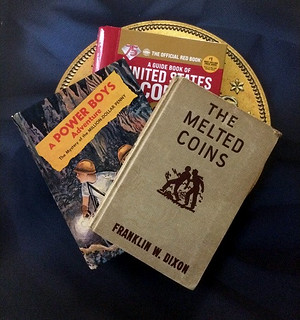 Collectors and dealers are always asking,
Collectors and dealers are always asking, How can we get more kids interested in the hobby?
The idea of creating popular children's books about coins comes up pretty frequently. I ponder this from time to time, and I've yet to hit on a surefire approach. Here are some thoughts, so you can be pondering it, too.
From a sales viewpoint: A commercial publishing firm (like Whitman) will always want to know that a book a) has an audience and b) will sell. Part of the challenge with a kids' book about coins is how to define and predict the audience. It's tempting to think, There are 75 million children in the United States; even if I sell a book to just 1 out of every 5,000 kids, that's 15,000 books.
A more realistic approach might be, There are 300,000 active coin collectors in the United States; if I can sell a book to 1% of them, that's 3,000 books.
And an even more realistic understanding of markets is that selling anything to 1% of any given audience is a major accomplishment.
NOTES FROM E-SYLUM READERS: JUNE 6, 2021
Keith Scott on Military MedalsKeith Scott writes:
"I've come to believe in Curator DNA
and I'm a carrier.
"It's a shame when family history is lost and an item such as a medal becomes mundane. I consider myself to not be an owner, but a Custodian.
"In 1978 a former neighbor died and his 2 Sons sold everything at a garage sale including the 4 medals in the left top. They were $3.00 for the group and I felt obligated to do something else other than treat them as collectibles. I documented his name and what little else I knew. All I need now is a bit of time and some internet research to fill in the details.
"Below that are 5 coins that also have a story. I built a desk drawer for a WW2 veteran in 2007 and came upon the coins in a box. He had served in North Africa in an aircraft repair facility and had kept the coins together probably because they couldn't be spent easily. He said I could have them.
"A few notes were made of his stories and experiences that made him become a Minister and a proponent for peace and social justice. A nicer holder is needed.
"The last medal and MPC's belonged to my father (Korea 1952 to 1953). There is also paperwork that supports all promotions, assignments, dates and places.
"Over 200 photos were condensed to the top 40 that had captions added. These were shown on Monday at a open house of the USS Hornet in Alameda CA. Collections of this type need to be shared so history won't be lost."
Thank you! -Editor
To read the earlier E-Sylum article, see:
THE AUCTION OF A PURPLE HEART
(https://www.coinbooks.org/v24/esylum_v24n22a21.html)
Other topics this week include The Banknote Book, and Nils Lofgren's cpoin collection. -Editor
POSTAL NOTES AND ORDERS WEBSITE PROPOSED
Aidan Work writes:"I am proposing the creation of an online catalogue & gallery website to showcase & educate the numismatic community about the postal notes & postal orders of the world, as the collection & study of postal notes & postal orders are very well-known among the philatelic community, but less well-known among the numismatic community.
"One of my aims is to rectify this - & it should be a collaborative project by postal order collectors themselves to help in creating an educational resource, considering some countries never had banknotes or coins, but did have their own postal orders.
"A gallery program that could be used can be downloaded from https://www.4homepages.de/download-4images onto a server of some sort.
"I don't have the technical ability or skills to be able to build a website myself.
"Catalogues about postal orders have been published in printed form, but there is more information that is coming to light since these books have been published."
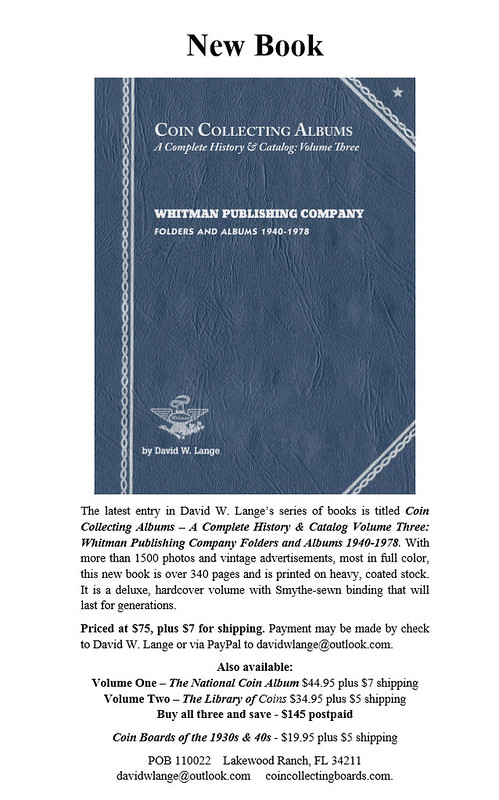
VOCABULARY TERM: EDGE LETTERING, PART 4
Here's more from the entry on Edge Lettering and Numbering from Dick Johnson's Encyclopedia of Coin and Medal Terminology. -Editor
Edge Mintmarks and Symbols Most of what has been discussed will help the observer decipher what is found on the edges of medals. Another practice needs to be discussed: the use of symbols as mintmarks or hallmarks, predominantly that of the official mint of the French government – the "Paris mintmark."
What originated as a mintmaster's mark evolved into a charming custom of a symbol for the Paris Mint. Since the 1830s symbols have appeared on French medals. Currently this is a cornucopia for medals produced since January 1880. And, since 1959, the date has been added in addition to the cornucopia mark. Previously the symbols were:
ELLA QUINN (1832-1900)
Here's another entry from the online draft of John Lupia's book of numismatic biographies. Thanks! This is an excerpt with the full article and bibliography available online. This week's subject is Ella Quinn and her barrel of gold. I added an image of one version of the newspaper article found via Newspapers.com. -Editor
Ella Quinn (1832-1900), was born in Ireland and moved to America circa 1859. She married Dennis Quinn (1833-1889). Mr. Quinn was a saloon owner at Philadelphia. She died April 3, 1900, at her home 614 South 7th Street, Philadelphia, Pennsylvania.
Philadelphia Woman Worth $500,000 Secreted Her Money for Years.
HARVEY STACK'S NUMISMATIC FAMILY, PART 97
The latest article in Harvey Stack's blog series continues with the year 1985 and Norman Stack's United States Type Coins: An illustrated History of the Federal Coinage, First published in 1977, later revised in 1986. -Editor
After rejoining the firm at the end of his military service in 1955, Norman, a dedicated and knowledgeable collector, decided to build a high quality type set that Stack's could use to show a good way to start collecting. A type set offered a chance to learn about and own various denominations and designs, and explore how coin motifs at the U.S. Mint evolved over the years. This method of collecting included major and minor changes to a motif, or even adjustments in weight or composition that altered a coin's design in some way. By 1977 Norman, with help from me and my son, Larry, finished what he felt was a good example of a Type Set of United States Coinage. We decided to issue a book explaining the coins that would enhance such a collection. First, we showed all the obverse designs needed to build an introductory set. Second we featured the various reverse designs that were used, some of which shared an obverse design, further expanding the set. Third, we discussed where the coinage of the various mints could fit into the set and provided a list of major additions to each design (if changes were made) that could further expand the set.
THE COIN THAT CHANGED JIM MCGUIGAN'S LIFE
With permission we're publishing this excerpt from a nice article by dealer Jim McGuigan. Reproduced from the June 2021 issue of The Numismatist, official publication of the American Numismatic Association (money.org). Thanks! -Editor
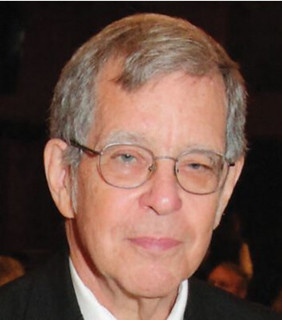 Sometimes an event or encounter with another person
can have a significant impact on
one's career path. This is the
story of how a coin purchase altered the direction of my life.
Sometimes an event or encounter with another person
can have a significant impact on
one's career path. This is the
story of how a coin purchase altered the direction of my life.
As a young boy growing up in Pittsburgh, I was bitten by the collecting bug early in life. In addition to coins, I collected stamps, comic books, baseball cards and toy soldiers. I began acquiring coins when I was about 10 years old. Like many beginning collectors in this era, I started filling holes in Whitman folders with Lincoln cents my parents received in change. Later, my father brought home a few rolls of cents from the bank each week so I could look for dates I was missing. I also expanded my collection to include other denominations— nickels, dimes, quarters, half dollars and silver dollars.
I found it difficult to locate
certain dates (and mintmarks) in
change, so I started visiting local
coin shops. After buying a copy of
A Guide Book of United States Coins
(the Red Book
) and learning how
scarce and valuable many of the
key dates were in each denomination, I started saving my allowance
to purchase some of these coins.
My interest in early U.S. coins was
sparked in 1957 when I purchased
several half cents, including the
1797 1 Above 1
and 1804 Spiked
Chin
varieties from Addison
Smith—a Pittsburgh dealer.
COLTRANE COLLECTION PART 2 SELECTIONS
Bruce Hagen and Maureen Levine cataloged the Mike Coltrane Collection Part 2 for Heritage, with assistance from Bob Moon and Frank Clark. They submitted this selection of highlights. Thanks! More next week... -Editor
The Mike Coltrane Collection Part 2 Sale
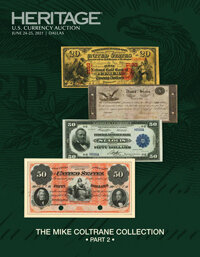 Last fall's Mike Coltrane Part 1 sale was enthusiastically received by the numismatic community. A new auction record for a War of 1812 Treasury Note was achieved when the 1815 $3 triple-signature issued note realized $168,000. Hundreds of other notes in all value windows were also won by eager bidders. Currency collectors will not want to miss The Mike Coltrane Collection Part 2, to be sold unreserved by Heritage Auctions on June 24-25, 2021. This event offers outstanding opportunities for bidders to obtain many choice and interesting United States and related currency notes, most of which have been off the market for decades and are offered certified for the first time.
Last fall's Mike Coltrane Part 1 sale was enthusiastically received by the numismatic community. A new auction record for a War of 1812 Treasury Note was achieved when the 1815 $3 triple-signature issued note realized $168,000. Hundreds of other notes in all value windows were also won by eager bidders. Currency collectors will not want to miss The Mike Coltrane Collection Part 2, to be sold unreserved by Heritage Auctions on June 24-25, 2021. This event offers outstanding opportunities for bidders to obtain many choice and interesting United States and related currency notes, most of which have been off the market for decades and are offered certified for the first time.
NUMISMAGRAM SELECTIONS: JUNE 2021
Jeremy Bostwick at Numismagram passed along these highlights from his most recent addition of new tokens and art medals to his website. In particular, the refined elegance of Art Nouveau and Neoclassicism is in opposition to the powerful and moving—and sometimes haunting—imagery created during the chaos of World War I. To view all of these new items, please visit numismagram.com/inventory -Editor
Issued 1916. The First Battle of the Marne (68mm, 159.05 g, 12h). By J. P. Legastelois at the Paris mint. BATAILLE DE LA MARNE, jugate capped and uniformed busts right of the generals: Joseph Joffre, Michel-Joseph Maunoury, and Joseph Gallieni; on tablet below in two lines, SEPTEMBRE / 1914 / Marianne-Victory flying right, holding sword; battle scene below, with French and British forces repelling their German enemies. Edge: «cornucopia» BRONZE. Maier 231. Choice Mint State. Attractive olive-brown woodgrain surfaces, with a slight matte nature. $365.
1912 GERMAN EAST AFRICA 500 RUPIEN
A new article on the World Banknote Auctions Blog discusses a rare German East Africa note in the firm's current sale. -Editor
In the first installment of our blog, we take a closer look at the 1912 500 Rupien from German East Africa, one of the classic rarities in German and African banknotes.
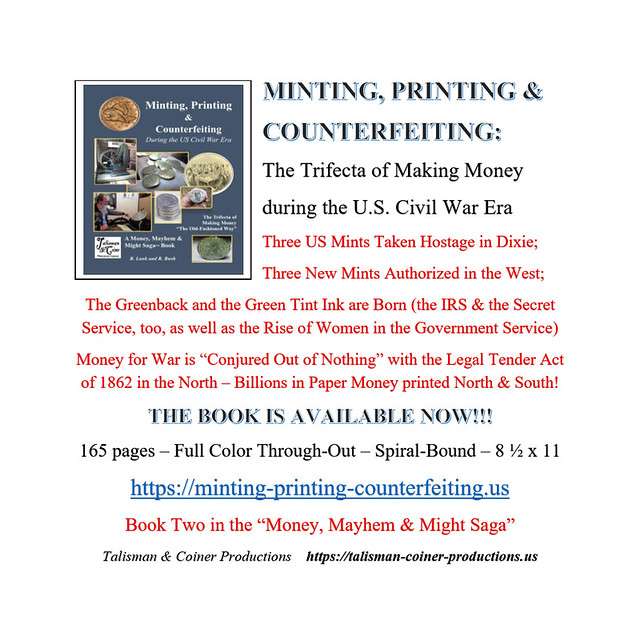
NUMISMATIC NUGGETS: JUNE 6, 2021
Here's a selection of interesting or unusual items I came across in the marketplace this week. Tell us what you think of some of these. -Editor
William III (1694-1702), Shilling, 1700, taller 0s in date line, fifth bust right, legend surrounding, GVLIELMVS III DEI GRA. Rev, crowned cruciform shields, five strings to Irish harp, Lion of Nassau at centre, date flanking top crown, reads MAG BR FRA ET HIB REX (S.3516; Bull. 1150 ESC 1121).
William III (1694-1702), Shilling, 1700, taller 0s in date line, fifth bust right, legend surrounding, GVLIELMVS III DEI GRA. Rev, crowned cruciform shields, five strings to Irish harp, Lion of Nassau at centre, date flanking top crown, reads MAG BR FRA ET HIB REX (S.3516; Bull. 1150 ESC. 1121). Attractive lustrous toning with mint bloom, some haymarking on both sides, common for the type. Free from any surface markings with a balanced and detailed portrait. Reverse, equally impressive, other than a few hairlines, superb. Near extremely fine.
Found on the Baldwin's site. Nice coin. -Editor
To read the complete item description, see:
WILLIAM III (1694-1702), SHILLING, 1700, TALLER 0S IN DATE LINE, FIFTH BUST
(https://www.baldwin.co.uk/product/william-iii-1694-1702-shilling-1700-taller-0s-in-date-line-fifth-bust/)
Other topics this week include the 1809 over inverted 9 Half Cent, the Chubbuck Morse Code token, and more. -Editor
THE BOOK BAZARRE
TEMPLES ON ANCIENT COINS
In his CoinWeek Ancient Coin Series Mike Markowitz published a nice piece about temples on ancient coins. Here's an excerpt. Be sure to read the complete version online. -Editor
Two of the most common circulating American coins depict buildings modeled on Greco-Roman temples: the Lincoln Memorial on the cent, and Monticello, Thomas Jefferson's elegant domed residence, on the nickel. Coinage is conservative! Temples of many different deities adorn the reverses of hundreds of ancient coin types, and collectors have eagerly sought the finest and most historic specimens for centuries. By one estimate, over a thousand different ancient buildings are depicted on coins, and, in many cases, the coins are the only evidence for how the structures appeared (Price and Trell, 11).
To understand descriptions of ancient temples found in coin catalogs, it's helpful to know some terminology.
THE GOLD AUREUS OF DIOCLETIAN
I came across this nicely illustrated piece on the gold aureus of Diocletian on the Baldwin's blog. -Editor
Revolutionary, formidable and feared, Diocletian is without a doubt one of the most important rulers in the history of the Roman Empire. After decades of turmoil across the Roman world during what is now known as the Crisis of the Third Century, Diocletian rose to prominence after the murder of Numerian. He would rule from AD 284 until 305. His reign was characterized by the creation of what is now known as the ‘Dominate'. This institution essentially lifted the emperor to a god among men – with the emperor donning robes and regalia more befitting of an eastern king than a Roman Emperor, and only accepting visits from a select few individuals.
ANTIQUES ROADSHOW COMMUNION TOKEN HOARD
A minister brought his church's communion tokens to the Antiques Roadshow for an evaluation. -Editor
I've never seen these in England, which is communion tokens, and you're obviously a man of the cloth. Is this from your church?"
This is from our church,
the guest replied. The first lot of communion tokens from 1777, and the box is the later version 1840.
What's the story with them?
John asked and the minister replied: To have one of these tokens meant that whoever you were, you were allowed into the church, to be able to go to Communion, which in the 18th century was hugely important for the local people.
SS CENTRAL AMERICA GOLD COUNTERSTAMP
Nice New Orleans gold coins are scarce. Counterstamped gold coins are rare. Counterstamped New Orleans gold coins brought up from the wreck of the SS Central America are amazing, rare survivors. This press release from M.S. Rau illustrates the rarity, which is on display in their New Orleans gallery. -Editor
A unique, sunken treasure gold coin that made its way from New Orleans to the California Gold Rush and then to the Panama railroad before going down with a famous ship has now come home to The Big Easy for the public to see.
It left the United States Mint branch in New Orleans 167 years ago, and for 157 of those years it was submerged on the floor of the Atlanta Ocean as part of America's greatest lost treasure.
WWI COLORED HEROES MEDAL FOUND
Web site visitor Dennis Byrne found us while researching a medal his daughter found. Here's the story. -Editor
We left Oklahoma City to visit our daughter Sarah and her family in Holly Springs MS. Although short, it was a great trip! They bought 30 acres in Holly Springs and have been excavating it to build a new home. Last week she found this medallion from WWI. (how appropriate for Memorial Day!)
15TH CENTURY BRONZE ROUNDEL OF VENUS
This article discusses an amazing 15th century bronze roundel depicting the goddess Venus. -Editor
The richly decorated roundel, valued at £17 million, has been expertly crafted from bronze and is in exemplary condition despite its significant age with vibrant silvered features and mercury gilding. Although the artist is not known, experts reviewing the artefact believe it was created by at least two sculptors of significant talent.
Venus, the Roman goddess of Love, is depicted on the roundel surrounded by her lover Mars, husband Vulcan and son Cupid. The mythological references in the design, and the quality of the relief, reveal the sophistication of the patron and the artist's understanding of the classical past.
JIGSAW COINAGE DESIGNS
Ultramodern numismatist Pabitra Saha has published an article on the trend of "jigsaw" coinage designs. With permission, here's an excerpt. Thank you. -Editor
One of the recent trends in design of coin series is use of jigsaw design. It was first used in series of collector coins issued by France on centenary of Tour de France in 2003. The face value of each coin was 1.5 Euro, a non standard denomination. Tour de France is a several days long, nation wide cycling race, held annually. A cycle chain was the unifying item across the reverse.
ON THOUSAND OUNCE BARS
Last week's video from David Lisot discussed a thousand ounce bar of silver. Pete Smith submitted these thoughts on dealing with thousand ounce bars of bullion. Thanks! -Editor
About that Thousand Ounce Bar
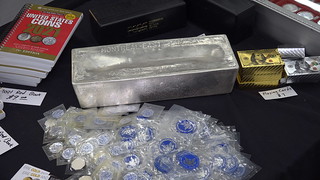 When I worked for a Minneapolis bullion dealer, we had a garage where clients could drive in to
make a secure pick-up or delivery. I recall the day when a client backed his pick-up into the
garage and I helped unload seven thousand-ounce bars from the back. They don't weigh 80
pounds and I couldn't lift one in one hand.
Later, working for another firm, it was my responsibility to ship those bars. A thousand-ounce
bar will fit cross-wise in a large postal flat-rate box with a maximum weight of 70 pounds. We
got good value from the post office with those typically weighing in at around 69 pounds, 4
ounces.
When I worked for a Minneapolis bullion dealer, we had a garage where clients could drive in to
make a secure pick-up or delivery. I recall the day when a client backed his pick-up into the
garage and I helped unload seven thousand-ounce bars from the back. They don't weigh 80
pounds and I couldn't lift one in one hand.
Later, working for another firm, it was my responsibility to ship those bars. A thousand-ounce
bar will fit cross-wise in a large postal flat-rate box with a maximum weight of 70 pounds. We
got good value from the post office with those typically weighing in at around 69 pounds, 4
ounces.
COUNTERFEIT COINS INTERCEPTED
The Anti-Counterfeiting Task Force assisted law enforcement in the recent seizure of over 40,000 fake coins. Here's the press release. Great photos! This is a big problem requiring and equally big response from the industry. -Editor
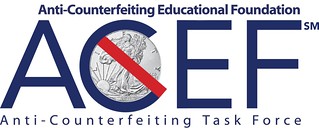 Representatives of the Anti-Counterfeiting Educational Foundation (www.ACEFonline.org) and its Anti-Counterfeiting Task Force (ACTF) on the request of the Secret Service provided on-site numismatic expertise to federal law enforcement agents in the Los Angeles area who seized more than 40,000 fake Morgan and Peace dollars, American Eagle silver bullion coins and $2 1/2 Indian Head gold coins.
Representatives of the Anti-Counterfeiting Educational Foundation (www.ACEFonline.org) and its Anti-Counterfeiting Task Force (ACTF) on the request of the Secret Service provided on-site numismatic expertise to federal law enforcement agents in the Los Angeles area who seized more than 40,000 fake Morgan and Peace dollars, American Eagle silver bullion coins and $2 1/2 Indian Head gold coins.
The counterfeits were intercepted from overseas shipments and seized during a two-month joint investigation by the Secret Service and U.S. Customs and Border Protection,
explained ACEF Anti-Counterfeiting Director Doug Davis who flew from Dallas, Texas to California to assist investigators.
CENT CHARRED IN THE TULSA RACE MASSACRE
Earlier this year, Len Augsburger alerted us to the existence of a numismatic connection to the Tulsa Race Massacre. Anne Bentley passed along a May 24, 2021 Smithsonian article which illustrates the piece. Thanks! -Editor
George Monroe was 5 years old when he collected this penny in the aftermath of the deadliest racial massacre in U.S. history. Lincoln's likeness is marred; the word liberty
is barely legible. The back of the penny is so melted that nothing is visible.
Monroe survived the Tulsa Race Massacre, which began May 31, 1921, in a thriving African American community in Tulsa, Oklahoma. No one knows exactly how many people died, and no one was convicted. For nearly a century, the story was rarely told.
WHEN WILL HARRIET TUBMAN ADORN THE $20 BILL?
Kellen Hoard passed along this Washington Post article about planning for a Harriet Tubman portrait on the U.S. $20 bill. -Editor
Kellen notes that the article...
"[included a] memo from Treasury Staff to Treasury Secretary Andrew Mellon suggesting people to be featured on the new currency designs. Interestingly, Mellon in pencil reversed the positions of Cleveland and Jackson."
President Biden's White House basked in praise from allies in its early days when it pledged to look for ways to speed up
the process of putting abolitionist Harriet Tubman on the front of the $20 bill, replacing President Andrew Jackson, who owned enslaved people and forcibly relocated Native Americans.
But four months after taking office, there is little evidence that the administration has taken any steps to accelerate the schedule set out years ago by a small agency within the Treasury Department.
THE BOOK BAZARRE
TROMPE L'OEIL MONEY ARTIST JOHN HABERLE
Arthur Shippee passed along a nice article about trompe l'oeil painter John Haberle. Thanks! See the complete article online and follow the links to view more Haberle works. -Editor
The Art Institute was yesterday afternoon the scene of a delicate and interesting experiment, upon the result of which a personal reputation may be said to have rested and certainly upon which the merit of a work of presumptive art did depend,
the Chicago Daily News reported loquaciously on July 3, 1889. The personal reputation at stake was that of New Haven artist, John Haberle. At the time, Haberle's painting U.S.A. was hanging in the main gallery of the Art Institute of Chicago, attracting much scrutiny and speculation.
BECKETT SUSPENDS MOST GRADING SERVICES
For some time we've been following the explosive growth in collectible fields including numismatics and sports cards. The frenzy for third party grading of trading cards has gotten so out of hand that another major grader is suspending submissions so it can work through its backlog. -Editor
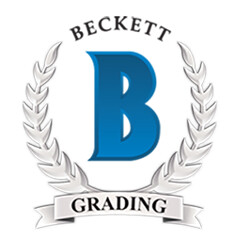 Overwhelmed with orders, Beckett Grading Services will temporarily stop accepting most trading card submissions next week.
Overwhelmed with orders, Beckett Grading Services will temporarily stop accepting most trading card submissions next week.
Like its competitor, PSA, Dallas-based Beckett has a backlog of ungraded cards that's so large that collectors and dealers have been waiting months for orders that used to be completed in weeks.
Beckett Collectibles President Jeromy Murray says all grading submissions other than the Premium Level service will be suspended after Monday, June 7.
LOOSE CHANGE: JUNE 6, 2021
Here are some additional items in the media this week that may be of interest. -Editor
Mark Benvenuto published a nice article in Numismatic News about the rapid changes in design and composition as the U.S. Mint switched over from large to small cents. -Editor
To read the complete article, see:
Six Years, Six Designs, Three Alloys – When We Changed Cents
(https://www.numismaticnews.net/collecting-101/six-years-six-designs-three-alloys-when-we-changed-cents)
Other topics this week include China's Digital Currency and Magawa the Rat. -Editor

